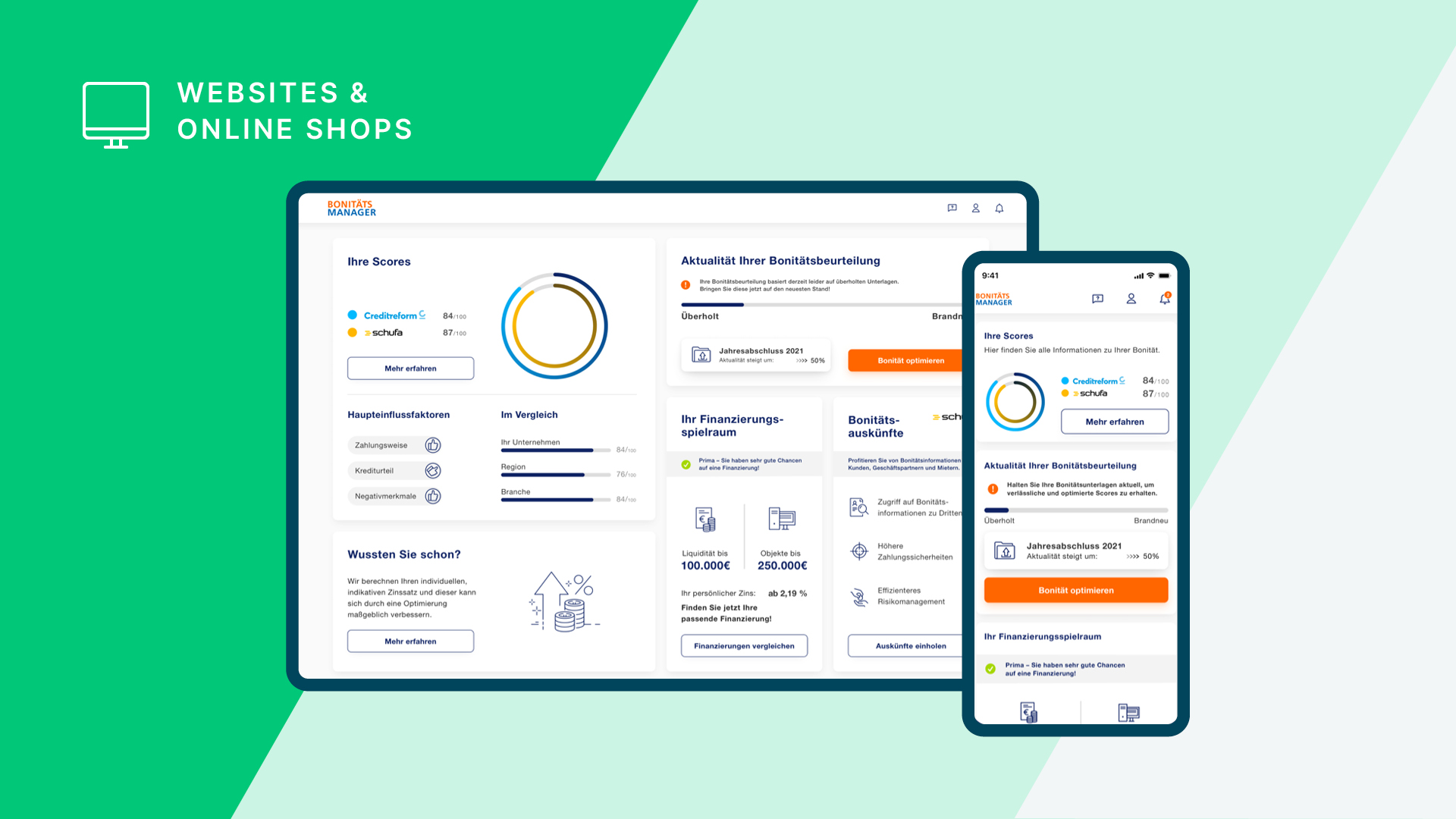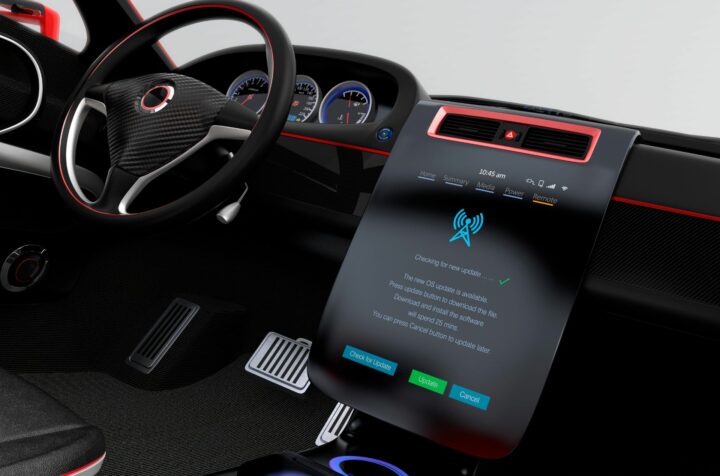In brief
Utilizing the power of people is vital for anyone who wants their digital solutions to work as intended, at any time, and to effortlessly meet ever-changing customer needs. Crowdtesting is the answer. Real people in real-world conditions testing your product on the devices you’ve developed them for, in the exact locations you want them to be used, and (importantly), without any bias.
This article takes a closer look at what crowdtesting is, how it can benefit your business and the best ways to get started!
Key takeaways:Key takeaways:
What it’s all about: Crowdtesting is a testing method that sources people from all over the world (or just your neighborhood) to test your digital products (including hardware elements) and optimize the user experience (UX). Depending on your project’s needs, they can be selected at any educational/work level, experience, ethnicity, gender, physical condition, or age (they can even be your customers and/or employees); so that they match your intended customers 100 percent. This gives you an unprecedented competitive advantage.
Why you can’t do without it: Let’s be honest. Everyone makes mistakes, and we all have specific biases about what we’re developing. Crowdtesters give you invaluable insights into what works and what doesn’t with your solution – without any operational blindness. Cost-effectively, quickly, flexibly, and at any scale. This helps to ensure you can deliver an optimal, and exceptionally reliable, digital solution, while being able to improve quality assurance (QA).
How to start, run, and continue your crowdtesting journey: There’s a lot to consider! From embedding crowdtesting directly into your overall strategy, deciding on the type of testing, to training your teams, developing customer journey maps, deciding on the level of tester expertise, and much more.
There’s no doubt that virtually everything today is about perfecting the customer experience and building a customer-centric focus around every aspect of your business. This means every digital solution must be designed, developed, and tested with the user firmly in mind. It’s all about pull not push. Read on to see how crowdtesting can help you meet the challenge!
Show less- What is Crowdtesting?
- Why is Crowdtesting so important today?
- Is Crowdtesting just outsourcing?
- Crowdtesting vs other testing methods
- What are the benefits of Crowdtesting for your business?
- Are Crowdtesting platforms safe for enterprises?
- Can Crowdtesting replace your internal quality assurance team?
- What should you look for in a Crowdtesting service?
- How to Crowdtest
- The future of Crowdtesting
The Only Guide to Crowdtesting You’ll Ever Need
Imagine being able to say, “reviews of our app went from okay to outstanding after just a few changes”. Then consider any number of similar scenarios where relevant and, sometimes unforeseen, changes can radically improve a feature or the overall quality of your digital product.
Making it more user-friendly, more reliable, and secure, and even offering your customers something you hadn’t even thought about.
In a world where first impressions mean everything and the need to meet a huge number of different expectations is vital, digital solutions must perform the near impossible: Be everything to everyone.
And they can’t do that if you don’t factor in the ‘4 U’s’! That the product is Useful, Usable, User-friendly, and Used. This means looking beyond whether a product or site works as expected and seeing how it realistically impacts the user.
Does it deliver what they expect, need, or want? Where does it cause friction?
This is where crowdtesting makes a world of difference. Read on to find out what it’s all about and how you can use it to create amazing and successful products.
What is Crowdtesting?
There are a couple of ways to think about crowdtesting.
On a technical level, it’s about using a specific software platform to conduct remote tests on a product (usually digital) using the basic principle of crowdsourcing – where groups of people are typically sourced via the internet to complete tasks, do research, help generate new product ideas, and more.
The primary difference is that crowdtesting uses carefully selected people (crowdtesters) to test solutions in real-world conditions.
Not only does it cover nearly every testing discipline, but it’s highly flexible. From test case creation, usability testing, bug testing, customer journey testing, comparison studies, and prototype evaluations (to name just a few), it uses crowds of people who perfectly match your chosen demographic to deliver fast and unbiased results. From any location and time, and on the exact devices you need. At every stage of development.
Another way to think of crowdtesting is as an extension of your product, QA, and development resources, but one that enables you to take your product outside of the lab for real-world testing without using your resources to locate and validate a potentially massive number of testers. This helps ensure your testing is cost-effective, change-ready, scalable, and avoids cognitive tunneling (focusing too much on one thing that you miss other relevant data) and operational blindness (where you’re so familiar with something you can miss obvious issues and opportunities).
All of this lets you discover bugs and usability issues, to better understand exactly how users interact with your solution and see if the overall experience is a good one (and if not, why and where) – well before your product (or update) goes public.
Ultimately, crowdtesting is more than testing. It’s about providing a human element that empowers you to create digital products that your customers really love.
Why is Crowdtesting so important today?
It all comes down to three things:
- Keeping up with the pace of innovation
- Meeting your customer and end users’ expectations, and
- Quickly releasing new products, patches, and updates.
As new technologies and advances in connectivity drive the rapid development of highly innovative, never-seen-before digital products (that must provide a great experience – sometimes even before they’re paid for), traditional ways of software testing are causing more bottlenecks than solutions, even when automated or with a device emulator.
Crowdtesting, however, has evolved alongside these changes by utilizing agile platforms, ensuring seamless integration into existing systems, using the latest testing methodologies, sourcing expert testers, and becoming a holistic discipline that fully incorporates real-world usage to ensure more accurate and actionable results compared with simulated or controlled environments.
This is essential in today’s world where being good enough just isn’t enough. With crowdtesting, you can benefit from a service that is:
- Flexible and cost-effective
No matter what your digital solution is, crowdtesting provides an extensive range of proven smart testing solutions that cover quality, security, usability and the user experience, bug testing, the customer journey, and more.
Each software testing solution provides a highly efficient and streamlined way to test using crowdtesters who are only there when you need them (without the ongoing costs of an in-house team), flexible pricing structures with costs spread across many testers, and all at the service level that best meets your needs and budget.
What is a test scenario?
Unlike a test case, which is all about testing clearly defined steps, a test scenario takes a comprehensive look at end-to-end functionality (ultimately, any functionality that can be tested). Is it usable? Is it localized properly? What about accessibility?
Its primary aim is to ensure that the product works exactly as expected.
What is test quality?
Beyond just improving UX or QA, test quality is about the scope, detail, robustness, and comprehensiveness of any testing being done.
This ensures that testing results in deep and actionable insights.
- Diverse and global
The true benefit of using ‘the crowd’ is the ability to gain a massive range of characteristics, attributes, and opinions from people of all ages, different backgrounds, cultures, languages, places of birth, levels of experience, and much more – which results in a greater variety of test scenarios and test quality. This simply cannot be matched by (small) in-house teams.
Additionally, this also applies to the variety of devices, operating systems, and browsers you can test on and the various real-world conditions and environments you can test in.
- Fast and scalable
Whether you need a test ‘today’ or want to quickly reorganize a running test because of new requirements, crowdtesting has the resources on hand (globally and locally, which boosts coverage and enhances test quality) to provide 24/7 on-demand testing support that can easily scale with your needs.
Many testers can work on a project at the same time, which results in quicker test execution, translating into faster development times and products being released to the market much quicker. All without having to build an in-house team.
- Unbiased and actionable results
Honest first impressions make a huge difference. Crowdtesting provides access to people with a range of experiences and expectations – from highly skilled people in your industry to those with little or no knowledge of what you are offering – who are looking at your solution for the first time (unlike your in-house team that knows it backward and can miss obvious issues).
Such end-users – those who will use the product or service – then provide open, direct, and unbiased feedback on what works, what doesn’t, what they liked, what hurt their experience, and a lot more, which directly helps to ensure fast and actionable results.
Deliver better experiences with crowdtesting
Discover how your business and your customers can benefit from crowdtesting your products.
Is Crowdtesting just outsourcing?
There’s a wonderful German colloquial expression that means both ‘yes and no’ called ‘Jein’ (ja + nein), and it perfectly captures the answer.
It is a kind of outsourced testing (another term for crowdtesting is crowdsourced testing) but there are differences. Let’s quickly compare the two:
Utilizes crowds of real anonymous testers who are managed by a coordinator (e.g., Testbirds and its project managers) and connected over the internet on a specific and secure platform to provide maximum testing coverage and value.
Typically resembles an in-house testing team with specific expertise and is usually managed by one representative. They can be in your building or conduct tests within their premises.
All devices and operating systems are owned and operated by the crowdtesters, but the overall testing is managed via the crowdtesting company’s proprietary platform.
Testing platforms, devices, software tools, operating systems, etc., are owned by the outsourced testers or loaned by your organization.
Can provide a nearly limitless number of testers at all skill and experience levels. In this sense, crowdtesting is far more agile and scalable.
Uses a fixed number of testers with specific expertise in a field of testing (e.g., functional testing or mobile testing).
More budget-friendly and flexible in its setup, which can ensure fast results. In essence, there are no teams and no time zones.
Higher costs when compared to crowdtesting and requires more work upfront to get started and established (especially seeing they resemble a traditional working environment).
Helps to remove bias by using a diverse crowd who individually tests the product.
Susceptible to bias simply because it operates like any in-house team with employees who use and talk about the same product.
Crowdtesting vs other testing methods
- UX Agencies and Digital Experience Analytics Platforms
- In-House Testing
- Beta Testing
- Automation Testing
- Traditional Market Research
With recent research showing that 49% of app users abandon an application after just one day and 25% of users only use an app once, it’s clear that various factors negatively impact a user’s perception of such products.
It might be a poor onboarding experience (such as a long and overly detailed sign-up process), the application taking too long to load, bad navigation and user interface, the app crashes, there are security concerns, and too many commercials.
Without direct feedback, it’s difficult to know why someone stops using a product.
While tests are an ideal way to ensure such friction points are removed (or at least lessened), not all are fit-for-purpose, and compared with the overall flexibility of crowdtesting, can miss important issues. It’s also important to note that some forms of testing cannot match today’s development speed. Updates happen more often and annual testing schedules cannot keep up.
This is not a new issue. As far back as 2011 in their book ‘Race Against the Machine’, Erik Brynjolfsson and Andrew McAfee wrote “Our technologies are racing ahead but many of our skills and organizations are lagging behind”. Today, as technologies explode out of the gate, it’s traditional ways of software testing that are lagging.
Let’s look at a few testing methodologies, how they compare with crowdtesting, and how using the crowd alongside them can create substantial benefits.
- UX Agencies and Digital Experience Analytics Platforms
When you’re developing an app or website, it’s clearly important to see how people interact with it so you can better understand where there might be issues or roadblocks. Such digital experience platforms specialize in doing just that by using a variety of software tools, such as heatmaps that monitor what people looked at (or interacted with), or solutions that track the location of mouse clicks.
Their primary focus is on analyzing website data and providing data and insights into how a user interacts with a site. This can, however, be limiting when considering the overall user experience.
While crowdtesting can provide some of these quantitative data, it offers more options, such as more qualitative feedback. You can employ other types of tests, such as user interviews, usability tests, and accessibility testing, and receive direct feedback from real users.
On a somewhat bigger scale, UX agencies provide similar testing support, but have a larger focus/specialized knowledge around usability and user research. Especially when it comes to designing digital solutions. Again, crowdtesting can provide similar support, but is able to deliver a more holistic testing service that incorporates multiple testing scenarios and a broader group of diverse testers.
- In-House Testing
It doesn’t come any more traditional than conducting tests within your own business. It’s established, proven, and helps keep your proprietary solutions under cover until release. It is especially used for QA testing, and those doing the testing are employed by you, are specialized in their field, and gain very in-depth knowledge of your solutions.
But it can be very costly and time-consuming to set up a good team. This also means dealing with those ongoing costs including having to source your own devices and software solutions to do the testing. However, when testing in your lab you can put more controls in place and create test cases that fit extremely specific scenarios and needs.
Again, this is where crowdtesting becomes a valuable add-on to any existing testing services. More testers can be brought on board at virtually any time and from any location. They will also see the product with fresh eyes and zero bias about the product, while tests can be made outside of the lab, which helps ensure a better overall experience for your customers and greater quality for the product. Importantly, the crowdtesting is done on a needs-only basis and that means keeping costs down.
- Beta Testing
There’s one big similarity when it comes to beta testing and crowdtesting. It’s putting products directly in the hands of testers (who can also be customers/your target market) to see how the product works in real-world conditions. Both enable developers to see how their product is used and to discover actionable insights from a larger group than can be used in-house.
There are, however, differences. Beta testing typically runs for two or more weeks and places a larger focus on the customer’s experience with the product, whereas crowdtesting tends to focus on a specific area (such as looking for bugs) and the testing time is much shorter, from hours to days, which produces quicker results. Increasingly, however, specific areas of crowdtesting, such as UX Testing and Customer Journey Testing are also taking a more in-depth look at the user experience.
Beta testing is also very localized in its scope. Crowdtesting, on the other hand, can exponentially expand where a product is tested and involve more diverse testers and devices. When used together they can provide a truly holistic view of the experience, usability, and overall quality of a digital solution.
- Automation Testing
When it comes to speed and accuracy, automation testing is years ahead of manual testing. And with 73% of organizations using it for functional (how it performs in the real world) or regression testing (which can be functional and non-functional – looking at areas such as storage and security) in 2022 (and only 14% saying they have no automation), it is a much relied-upon solution that is ideal for quickly dealing with repetitive (and time-consuming) test case executions and finding bugs and vulnerabilities. It can be substantially less costly than manual testing.
While they require careful planning, they can only cover so much because they’re focused on checking and re-checking (and re-checking) code changes. Its benefit is being able to do these tasks without a break and without ‘human’ errors.
But what it does lack is that human element (which, to be fair, isn’t just about making mistakes). That makes crowdtesting an important partner for automation testing – specifically because it places actual customers/users into the product’s development and gives them the opportunity to discuss their needs. In fact, crowdtesting can even include employees, partners, vendors, and even existing customers into the software testing process. Imagine the feedback they can provide!
Without these insights, experiences, differences, and varied expectations, testing can only catch so much. Discovering what makes or breaks the user experience at a truly deep level – or what can substantially improve the user experience – can only make a better product.
Take localization testing. While it can be automated (using a tool such as Selenium), it can only be as good as the script written for it and this may result in incomplete tests as it can only capture what the person entering the code knew or considered. A pass/fail can catch certain things (it didn’t update the language), but not the subtle differences in language (did your translators get it right?), that all characters were correct, appropriate colors are used, and many more things that a real person will catch.
Crowdtesting experts can also expand your reach by enabling you to use crowds of testers from literally any country on Earth to test if your localization is working.
- Traditional Market Research
We all know that data is vital if you want to create a product that people love. From ideation to realization, input from multiple areas can make a huge impact.
This, however, is where crowdtesting surpasses traditional market research (TMR), especially when it comes to ideation. TMR gathers data through interviews, surveys, and focus groups. But mostly to gain answers to a specific set of questions, often in large groups, and usually in a one-off situation (which means the research is not always iterative). Finding people, setting up locations, etc., can also incur larger costs and take a considerable amount of time. In many ways it is a rigid way of testing that cannot easily change what is tested or who is doing the testing/research.
Crowdtesting via online platforms removes this burden and can add to such traditional research by providing testing in real-world situations and being more flexible in what testers can look for and test – in far less time.
Crowd Surveys
Learn how you can gather your customers’ thoughts, alongside existing test projects, to make more holistic decisions in your product’s development.
Find out moreWhat are the benefits of Crowdtesting for your business?
From retail to insurance, every industry is going digital. Even more traditional ones like manufacturing are embracing the potential of smart digital solutions. This is seeing the need for robust testing becoming ever more necessary.
Especially because competition is growing with digitally-native businesses creating highly innovative solutions. Getting quality products into the market first is a huge competitive advantage. Crowdtesting helps make this possible, and much more.
As we mentioned earlier, crowdtesting is a flexible and cost-effective testing solution that brings together a (potentially) truly global, highly scalable, and diverse group of real people. This helps ensure solutions can be quickly developed/updated using unbiased feedback that delivers actionable results. Importantly, when using a professional crowdtesting provider, you can rest assured that all testers are paid fairly and that working conditions are ideal.
But the benefits are deeper than just that. Let’s consider seven.
- On-Demand – During peak periods and multiple sprints, you can augment (or supplement) your QA teams with on-demand crowdtesters. A perfect way to keep tests going, maintain speed throughout the development cycle, and remove unnecessary stress from your team.
- Scalable and Cost-efficient – If you have a small team (or no team at all), crowdtesting can quickly put the resources you need into place without the massive overhead costs normally required to source for and recruit additional testers.
- Flexible – You can efficiently reallocate internal resources to different (potentially more important) projects with minimal disruption and, as such, improve quality assurance across the board.
- Real-World Conditions – Its ability to use any number of different devices, browsers, and operating systems (not to forget cars, homes, offices, factories, etc.) in a wide variety of environments and locations means you can test your solution on them in different conditions and safely expand your offering to more customers.
- 24/7/365 Availability – You can test your products without any downtime. Available all day every day, crowdtesters can work on your solution from any location – and that means far greater geographical test coverage, which results in higher test quality. Your testing team may be out-of-office, but the testing can go on.
- Improved Accessibility – A hugely diverse crowd tests your products, and this means a solution that provides better accessibility (i.e., for those who are vision impaired), spot-on localization, and a more positive user experience. And that translates into more, and more loyal, customers.
- Fast Actionable Insights – That same diverse crowd can provide new insights in real-time that your internal team had never considered, which can lead to a better overall solution that appeals to more people.
The flexibility of crowdtesting, when combined with the human element, can be a powerful tool within your overall testing strategy.
Are Crowdtesting platforms safe for enterprises?
Yes. But when looking at crowdsourced testing platforms, there are several things to consider if they’re right for you and that your product is in safe and reliable hands:
Security
It’s your product, your software. You need to have confidence that when it’s shared between a group of crowdtesters and the platform owners, the platform is secure. Ask about its reliability and what processes are in place to ensure the safety of your solution. This includes being assured that any shared data remains confidential, so always look at any confidentiality/privacy agreements.
Testing process
Because you want your tests to be quick, efficient, and achieve your aims, it is vital to understand the crowdsourced testing process used by the platform. Do they have varying service levels? Can you use the platform to set up everything yourself or have them create and set up your tests? Are they able to fully manage your testing from start to finish? Are bug reports (and all other types) clear, detailed, and actionable?
Crowdtesters
You must trust that the crowds of people who test your products are the best to do so. Ask how they are chosen. Is there an ongoing evaluation setup? Are they ranked for experience, capabilities, and performance? How active are the testers you need?
Pricing
How flexible is the pricing? Do you have the options you need when purchasing a specific service? Is the platform clear on how pricing changes if new requirements need to be implemented while tests are running? How does it all change as projects become more complex and additional effort is required?
Easy and flexible testing
Learn how you can crowdtest based on your specific requirements and resources with credit-based pricing.
Find out moreCan Crowdtesting replace my internal quality assurance team?
Rather than being a complete replacement, crowdtesting works best as a highly flexible supplement to your existing QA resources, which provides numerous advantages:
- A cost-effective way to scale your tests as required
- Diverse testers on-demand who closely resemble your target group
- New and varied devices to expand the scope of your tests
- Actual use in real-world conditions and different environments
- A huge range of experiences and backgrounds help improve quality assurance
- Fast and unbiased feedback to optimize your solution
- Comprehensive reports on your testing results
- Proven results in multiple crowd testing projects
What should I look for in a Crowdtesting service?
You’ve done your research, crunched the numbers, and it looks like crowdtesting is the way to go. But what do you need to consider when choosing who to use? There are several factors.
Expertise
The company must have proven and relevant experience in testing the type of solution you’re developing and with the industry you’re working in. They must also have an in-depth knowledge of the tests you need, and the technologies involved, while being able to ask the right questions and source (and manage) crowdtesters who have the exact experience and expertise you need.
Reliability
Not just that the crowdtesting platform is stable, but they have enough experience in dealing with a wide variety of organizations and tests at all levels – from websites and mobile apps to enterprise-level applications.
You need to rely on their crowd being able to test rapidly, comprehensively, on time, and to your satisfaction. Every time.
Solutions-orientated
Not everything goes smoothly all the time. Not everything is as clear as it needs to be. Some gaps look impossible to cross. Being able to quickly find solutions and identify positive outcomes to complex issues is essential. You need an experienced and reliable partner that can work with you to get your products to market as soon as possible, not stand still and hope for the best.
Security and Quality
Good clients, comprehensive case studies, testimonials, and provable results. All can help you determine if your crowdtesting partner can provide the quality and security you and your solutions demand. That your data will be safe, your product secure, and all results confidential.
Flexibility
Things can change very swiftly. That means your tests may need to change in real time. Do you need more testers? Another level of experience to check a new feature, version, or model? New locations? New devices? You have to trust that your crowdtester has the flexibility (and experts on hand) to change your testing as required. What if your internal resources become too busy? Can they provide a fully Managed Service that frees them up and lets their experienced project managers take over? One that lets you maintain your community of on-demand testers or where the crowdtesting company can build and nurture them?
Successfully building connected apps for two-wheelers
“Crowdtesting is not only a game changer, sometimes it feels like a superpower.” Discover how crowdtesting helped BMW Motorrad validate and test their digital services with real users from around the world.
How to Crowdtest
Whether you want to test a game, site, Internet of Things device, a smart device, or the latest update of your mobile app, there are multiple things to consider when setting up crowdtesting.
Ideally, the absolute first thing to do is ensure that crowdtesting is front and center in your overall development strategy and that everyone knows about it, understands what it is, and is shown the need and benefit of it.
What then makes a good crowdtesting process? We’ve identified four phases – all of which can be done in consultation with your crowdtesting company:
Phase 1: Planning and preparation
Start with these first few steps:
- Determine what you want to test and the scope of the testing (new version, update)
- List what you want the testing to achieve (finding bugs, usability, improve UX)
- Consider the level of experience testers need and all other characteristics (job, gender, education)
- Set your timeframe
- Nominate those who will work with the crowdtesting provider and send reports back to your development team
Phase 2: Initiation and configuration
Next is your technical set-up and configuration:
- Set up your technical and functional requirements (what to test, devices, operating systems to use)
- Develop various scenarios/test cases
- Coordinate with your crowdtesting project manager who will discuss everything with the selected crowdtesters
Phase 3: Execution
At this stage, your digital product is tested by the selected crowdtesters who are monitored and supervised by the assigned project manager. All feedback (when using a managed service) is collected and collated by the PM who generates a specific report for your team.
Phase 4: Evaluation and completion
When using a managed service, that dedicated, final report will include an evaluation and analysis of all results, the data collected (including recorded tests and screenshots), and specific recommendations (actionable insights) on how to fix and/or optimize your solution. Each report, such as a bug report, can be easily implemented into your existing development process with data exported directly to your development tools.
The test cycle can then be finalized, and feedback sent to the crowdtesting company, including rating the crowdtesters.
A potential fifth phase is to re-test. Once bugs are fixed or user experience issues (friction) are removed, it may be necessary to test those fixes, especially if the solution is complex.
You can now release your product into the real world knowing it is ready to go.
Why does Crowdtesting represent the future?
Find out why Crowdtesting is the perfect methodology for quicker product releases today.
The future of Crowdtesting
Customers want it all and it’s no longer enough to push a product at people and say, ‘that’s good enough’, especially digital products. They can delete an app in seconds, go online and give bad review in seconds, and all while finding your competitor’s product to try.
Products are now as much about the experience they give as they are their functionality. And it has to be perfect. Crowdtesting gives you the human element to do that. In the near future this will be ever more important as digitization becomes the new normal. Not only will there be an increase in products developed using artificial intelligence and machine learning but highly connected Internet of Things devices, smart cars, smart homes, smart everything, will be everywhere.
Testing these essential devices, and those built by computers mimicking human behavior, will require real people to test them in a huge variety of conditions and countries, and on an ever-growing number of devices. These digital products must be safe, secure, do what is expected, and deliver that all important user experience at every stage of the customer journey.
The crowdtesting industry was recently valued at around $1.5 billion but is expected to reach $3.8 billion by the end of 2032, demonstrating the immense value of crowdtesting for you, your industry, and even your competition.
Tomorrow may be more digital but it’s going to be built by people for people because the human-touch is one of most important elements.
That’s why the future of digital testing is Crowdtesting.
We provide you with the latest insights from the world of crowdtesting
Stop guessing if your product meets your users' expectations and start making decisions based on facts.









